TRAINING FOR ACONCAGUA
Here are some General Advices that can help in the training for our ascent to Aconcagua, I hope you join them to motivate and make dreams come true!
INTRODUCTION
Mountaineering as a sport, and could be said as an “art”, is a balance between many factors: equipment, nutrition, hydration, acclimatization, evaluating objective and subjective risks, logistics, breaks, itinerary, training and others. Today we stay with the latter for an approach to it.
As we always say, it is best to first consult professionals, in this case first a medical study that will discharge us to train and practice mountaineering; It would be great to add the advice of a nutritionist and a physical trainer (who will accompany our training)
From the above it follows that it is super important to take care of our nutrition and our hydration in the day to day living the training plan (these will be topics of future blogs).
In addition, it is understood that the training must be personalized according to the characteristics of each one and very importantly according to our sports objectives. In fact, we have to train by visualizing and directing the plan towards them.
The ideal would be to include 3 aspects in our weekly training plan: AEROBIC, FUNCTIONAL and SPECIFIC.
It is also important that we give space in each training session to the WARM UP (with an aerobic moment and joint mobility) and at the end of the COOL DOWN (stretching elongation ). This helps us avoid injuries and improve our flexibility.
Finally, in the conclusion and the key point in our opinion: “the best training is sport itself”; in our case if we want to climb mountains the best we can we can do is go and climb them (always progressively in height and difficulty)
DEFINITION AND PRINCIPLES OF TRAINING
We include two training definitions:
In other words, we must work on RESISTANCE, POWER, STRENGTH AND FLEXIBILITY in a planned manner always based on our objective.
It is important to understand and respect the principles of training (this is where the physical trainer helps us with their advice), we leave you with a summary of them:
1-Principle of the EFFECTIVE LOAD STIMULUS:
The stimulus must exceed a certain intensity threshold in order to initiate an adaptation reaction. The magnitude of the stimulus ranges from a weak stimulus to an excessive stimulus, passing through an optimal stimulus.
2-Principle of PROGRESSIVE INCREASE:
The load must be increased progressively to ensure a correct adaptation. Progression order:
3-Principle of STRESS-REST ALTERNATION:
When the balanced relationship between load and recovery is not respected, reducing the rest time produces a long-term reduction in the level of performance that can also lead to chronic fatigue due to the impossibility of recovery.
4- Principle of REPETITION AND CONTINUITY:
Before varying the type of loads, the achievement of adaptation stability must be ensured, through continuity in the presentation of loads, repeating them throughout a phase before modifying it.
5-Principle of PERIODIZATION:
Make a subdivision of the training time along periods that respect going from a contractive phase to a stabilization phase and then propose a reduction
6-Princi

Find out before anyone else about the new expeditions and receive exclusive information
exclusive information.
Find out before anyone else about new expeditions and receive exclusive information.
ENVIAR CONSULTA